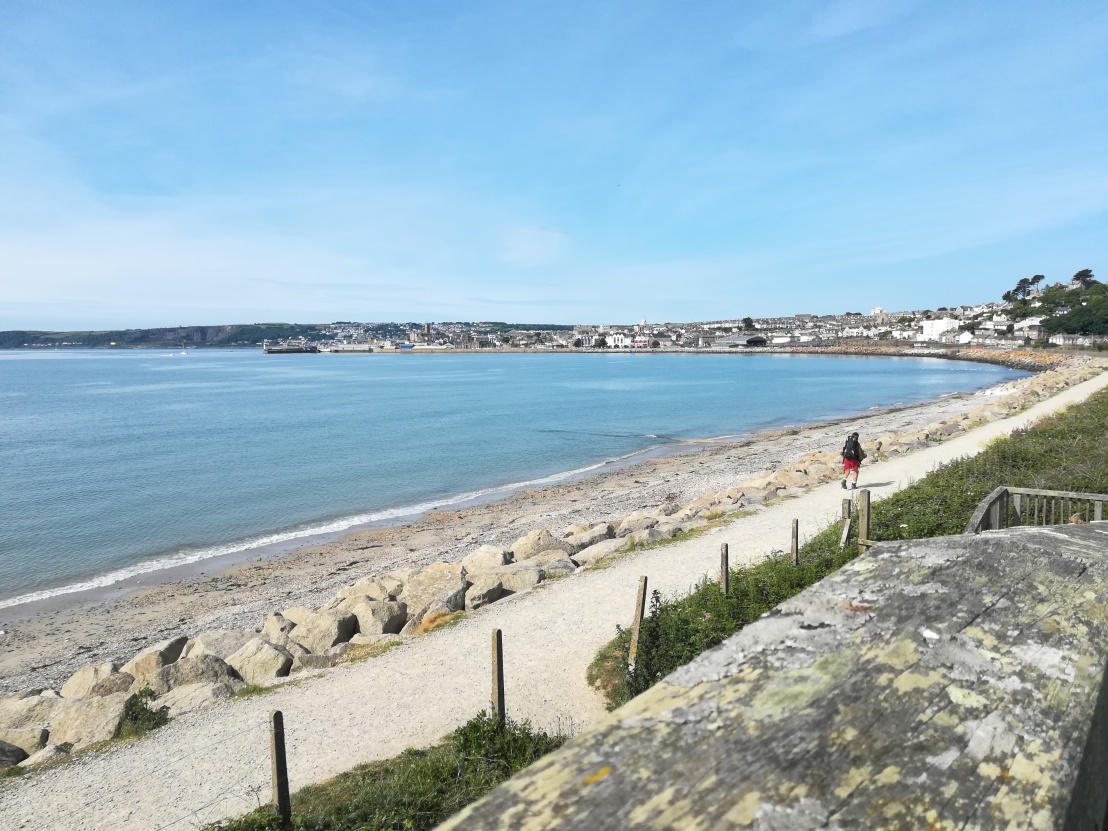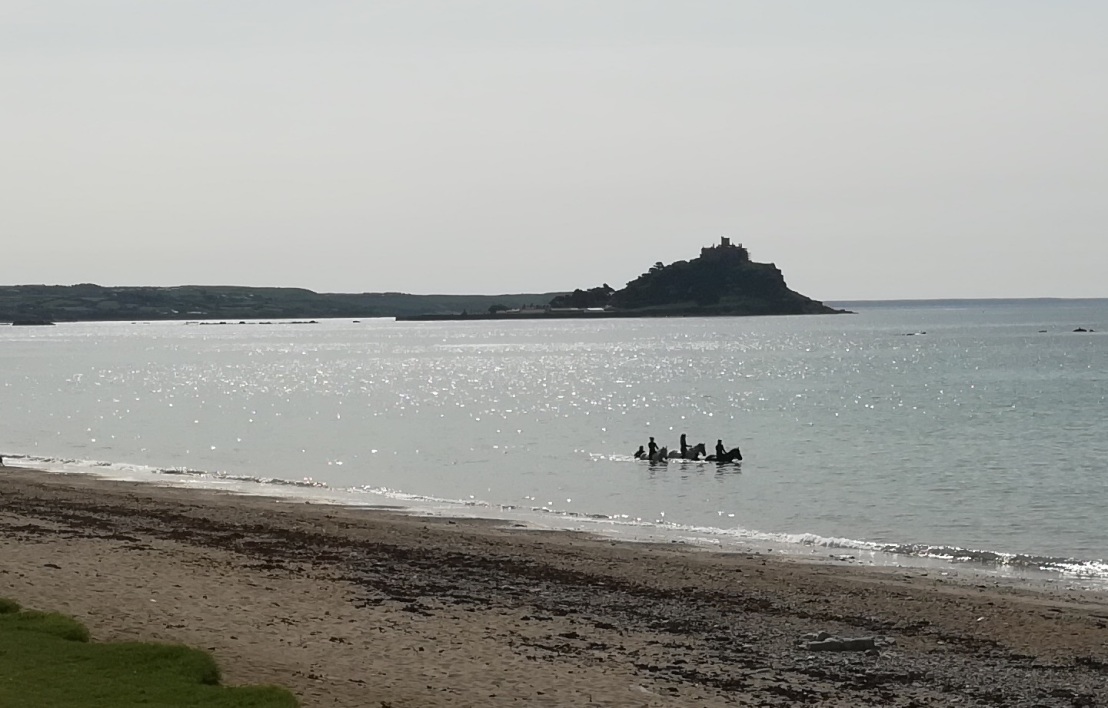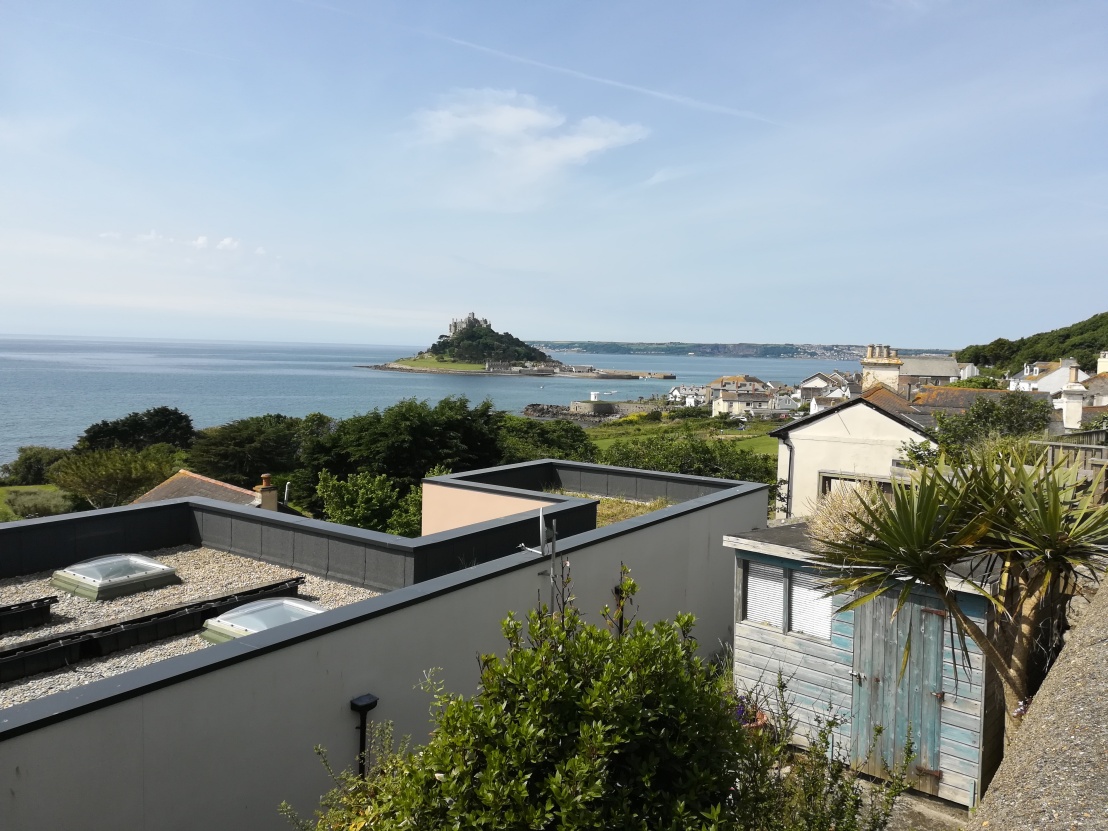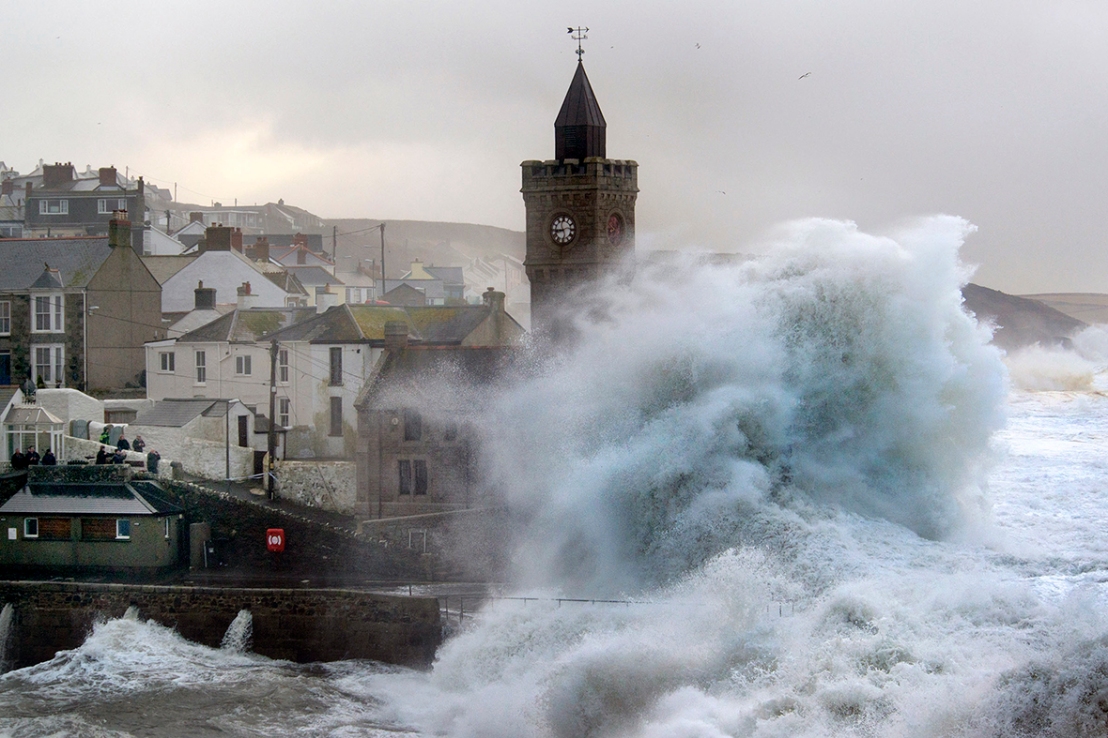I’m so glad I picked up the tip, from Walking Forum, about including ear plugs in the packing list; there were three of us in a dormitory for six, at least one of whom was a snorer. Of course, after five pints of ale the previous evening, there’s every chance that I joined in with two-part harmony, but I have no way of knowing. Here’s another tip: if you’re in a hotel/pub/b&b/hostel with motion detector lighting in the loo, and if you should need to pay a visit during the night and, moreover, if you should happen to drift off to sleep whilst seated in there, don’t panic when you wake up in the dark with no memory of where you are – just wave your arms about, preferably without screaming. Waking up in the night does, though, have the advantage of providing the opportunity to take your phone off charge, assuming it’s reached 100%.
Awake before 7am when the earliest breakfast isn’t available until 8, I retrieve my washed kit from the drying room and re-pack. The most time-intensive part of getting ready is pre-emptive treatment of the feet – foam tube for the overlapping toe, moleskin padding on a spot that felt warm yesterday and a Compeed plaster for the painless blister that’s developed over hard skin on the inside of a heel pad. I try always to pay heed to the ‘Treat your feet like royalty’ admonition I found in someone’s account of their Pennine Way journey. Then, of course, there’s the factor 30 sun cream, used as much for its insect-repellent properties as for its UV protection. Finally ready for the day, I head downstairs at 7.45 complete with Backpack, anticipating that I’ll be able to set upon the cold buffet elements of the breakfast offering before the full English becomes available but, incomprehensibly, the dining room door is locked and remains so, resolutely, until 8. Oh well, with 15 miles to do again today, there’s no particular time pressure today, particularly since there’s less than 2,000 feet of ascent. Chatting with another impatient hosteller, a somewhat rotund American engaged upon walking a few modest stretches of the coast path, I repeat my story: that I was going to do the whole SWCP next year as a retirement project but thought that Land’s End to John o’Groats would be more fun, so am doing Land’s End to Lyme Regis this year as a practice. Since there’s time to spare, I add that I’m carrying camping and cooking gear this year specifically to make my pack lighter, hoping thereby to boost morale next year.
Maxed out with calories, I set out well before 9am under blue skies and head back down to the coast path. I miss the path on the way out of town and follow the road for half a mile before rejoining it by crossing a pedestrian bridge over the railway. This is to become something of a theme in towns, where local ‘premier’ attractions are well signposted but the South West Coast Path is relegated to the obscurity of division two, leaving you to guess.

I stop for coffee at a shack run by a surfer-dude; on his hut are two large signs, the one on the left with an arrow pointing along the path towards his business rivals saying ‘Normal coffee’, the other pointing to his serving hatch saying ‘Life-changing coffee’. I approach and say that, without wishing to appear smug, I’m ok with my life and could he therefore dish up a cup of normal stuff? He seems to be ok with his life too and, on a day like this, who wouldn’t be, in that spot?
The views are dominated by St Michael’s mount, as they have been since the middle of yesterday afternoon. As I approach, a trio of what I assume to be Godolphin horses are being led into the sea for their water-therapy. One of them rears up at the waves, but is soon coaxed in.

The hard surfaces soon have my walking stick clicking on the ground with a familiar sound; turning it upside down to examine it, I find that the metal has again pierced the new rubber tip – so that’s why they sell you four!
On my way round the bay, I’m soon tempted onto the beach to join the morning strollers and, approaching Marazion, find that I have to coax myself into the water to cross a stream. This is time-consuming, because I have to remove carefully my boots, socks and foam tube, then wait for my feet to dry in order to remove sand before replacing them. The moleskin pad fails to adhere after its wetting, so I rub on a smear of anti-blister stick instead. It’s gone 11 o’ clock before I’m finally leaving the townscape.

Coming in the opposite direction along the path are so many Germans today that, eventually, I stop saying ‘Good morning’ or ‘Hi’ and start greeting fellow walkers with ‘Guten Tag’ instead. The farther I go, the fewer I see but, even so, the sun has certainly brought out the fair-weather ramblers in force.
After a leisurely lunch of the YHA packed variety, including a liquid KitKat, which I should have eaten before setting out to avoid having to spend ages extricating the biscuit from its foil wrapper, I carry on through prime smuggling and wrecking territory. The path passes through the courtyard of the fascinating Arts & Crafts-style Porth-en-Alls House, built on land once owned by the notorious smuggler John Carter, aka ‘King of Prussia’, hence the name Prussia Cove for the location.

There are plenty of folks enjoying the weather at Praa Sands, but I’m only interested in coffee. I tell my story to the girl serving at the café’s hatch, in response to which she insists I call again when doing LEJOG for charity so that they can donate. Once again I miss the path off the beach and head up a steep road instead, opting to make my way back to the coast via footpaths shown on the OS maps on Viewranger. The paths on the ground aren’t as clear as they appear on my phone, so I plod forlornly looking for an exit around a couple of fields before re-tracing my steps back to the first field and climbing over what was probably once a viable stile but now requires the removal of the rucksack to surmount. The way back to the coast path soon becomes clear however and, before long, I’m savouring the full flavour of the SWCP, hauling myself up and down roller-coaster hills to pay for the level ease of this morning’s route. At least, by now, a few thin clouds have rolled in to cool things down a little. At the risk of becoming hackneyed, I stop to take a shot of an old engine house, if only as a tribute to Wycliffe:

Yesterday in the Admiral Benbow, I overheard a lady on the adjacent table saying that, when Googling Porthleven, she’d read that it’s the most storm-battered village in the country; today, bathed in tranquil afternoon sunlight, such drama is hard to imagine.

I quench my thirst at a harbourside hostelry, then head for ‘Out of the Blue’, the name of the pub to which tonight’s campsite belongs. The name, I learn from the jovial manager, derives from the famous Blue Anchor at Helston, whose owners bought this pub as an additional outlet for their beers. I tell him, and the others at the bar, about the time when, back in the 1970’s, the Blue Anchor was one of just three home-brew pubs in the country, the others being the John Thompson Inn at Ingleby, south of Derby, and the Three Tuns at Bishop’s Castle in Shropshire, and how I’d made it my life’s mission to visit all three. As the day wore on into evening, I bored them with the story of how, when a relative and her husband bought a pub, they’d asked me if I’d set up a micro-brewery with them, and how’d I’d spent weeks looking into it, spending a day in three different small breweries including the John Thompson Inn and working through the finances. In the end I’d decided that, with three young children at the time, it would be too great a risk, because its viability would depend on selling beer to surrounding pubs and hotels, many of which were tied, either by ownership or by loans, to the big breweries and therefore obliged to sell their beer. Wimping out of that opportunity had been a big shucks, but it had probably saved my liver and my life.
I pitched my Snugpak Ionosphere for the third time, but this was for real, with a view to getting my first night’s sleep in it. I strolled back into town for food from the supermarket and, feeling duty-bound out of deference to the mining tradition, succumbed to one of their warm pasties. Back at the pub, I found framed photos of old Porthleven all around the walls, many providing evidence that this is indeed the country’s storm centre.

I also learn that Monday night is folk night, so continue to abuse my liver with more of the famous Spingo ale. In the event there are more musicians than audience, but I enjoy hearing them perform for each other. In spite of the entertainment, around 9pm I take pity on my liver and stagger off to the tent, pitched ignominiously next to a swish campervan, and endeavour to get comfortable enough to sleep. Eventually I do, even though I can’t quite figure out what to do with the arm which, between me and the hard ground, seems surplus to requirements.




